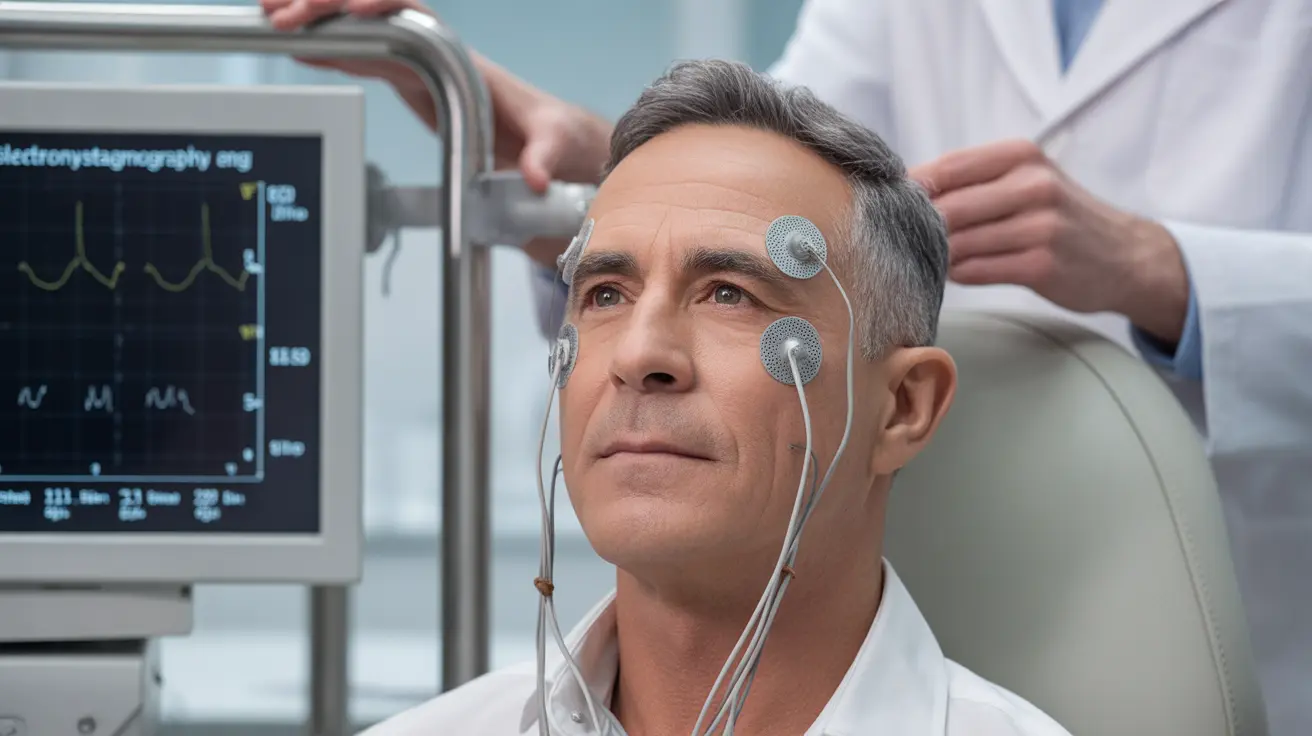Electronystagmography (ENG) testing is a specialized diagnostic procedure that helps healthcare providers evaluate balance disorders and inner ear function. This sophisticated test measures eye movements to detect problems within the vestibular system, which plays a crucial role in maintaining balance and spatial orientation.
If you're experiencing dizziness, vertigo, or balance issues, your doctor might recommend an ENG test to identify the underlying cause. Understanding what this test involves can help you feel more prepared and confident about the procedure.
How ENG Testing Works
An ENG test uses electrodes placed around your eyes to record eye movements in response to various stimuli. These tiny sensors detect the natural electrical activity that occurs when you move your eyes, providing valuable data about your vestibular system's function.
During the test, specialized equipment records and analyzes these eye movements, helping doctors identify specific patterns that may indicate various balance or vestibular disorders.
Components of an ENG Test
Calibration Phase
The test begins with a simple calibration procedure where you'll follow visual targets with your eyes. This helps establish a baseline for your natural eye movements and ensures accurate test results.
Positional Testing
You'll be asked to move your head and body into different positions while the equipment records your eye movements. This helps evaluate how your balance system responds to changes in head position.
Caloric Testing
This part involves introducing warm and cool air or water into each ear canal separately. This stimulation helps assess how well each inner ear is functioning independently.
Understanding Test Results
Your healthcare provider will analyze the recorded data to identify any abnormal eye movement patterns. These patterns can indicate various conditions, including:
- Benign paroxysmal positional vertigo (BPPV)
- Labyrinthitis
- Vestibular neuritis
- Ménière's disease
- Central nervous system disorders
Preparing for Your ENG Test
Proper preparation is essential for accurate test results. Your healthcare provider will typically provide specific instructions, which may include:
- Avoiding certain medications for 24-48 hours before the test
- Not wearing makeup around the eyes
- Limiting food and drink intake before the procedure
- Wearing comfortable clothing
- Arranging transportation home after the test
What to Expect During Testing
The complete ENG test usually takes between 60 to 90 minutes. You'll be seated in a comfortable position while the technician places small electrodes around your eyes. The various test components will be performed in sequence, with breaks as needed.
Frequently Asked Questions
What is an electronystagmography (ENG) test and why is it performed?
An ENG test is a diagnostic procedure that measures eye movements to evaluate balance disorders and inner ear function. It's performed when patients experience symptoms like dizziness, vertigo, or balance problems to help determine their underlying cause.
How should I prepare for an ENG test to ensure accurate results?
To prepare for an ENG test, avoid certain medications as directed by your doctor, don't wear eye makeup, limit food and drink intake before the test, and arrange for transportation home. Your healthcare provider will give you specific instructions based on your situation.
What sensations or symptoms can an ENG test help diagnose?
An ENG test can help diagnose conditions causing dizziness, vertigo, balance problems, and spatial disorientation. It's particularly useful in identifying vestibular disorders, inner ear problems, and certain neurological conditions.
How is electronystagmography different from other balance tests like videonystagmography (VNG)?
While ENG uses electrodes to measure eye movements, VNG uses video cameras mounted in special goggles. ENG is considered more traditional, while VNG is newer technology. Both tests serve similar diagnostic purposes, but VNG can provide more detailed visual information.
What happens during the ENG test and how long does it usually take?
The ENG test typically takes 60-90 minutes and involves several components: calibration, positional testing, and caloric testing. You'll have electrodes placed around your eyes and will undergo various movements and stimulations while your eye movements are recorded.




